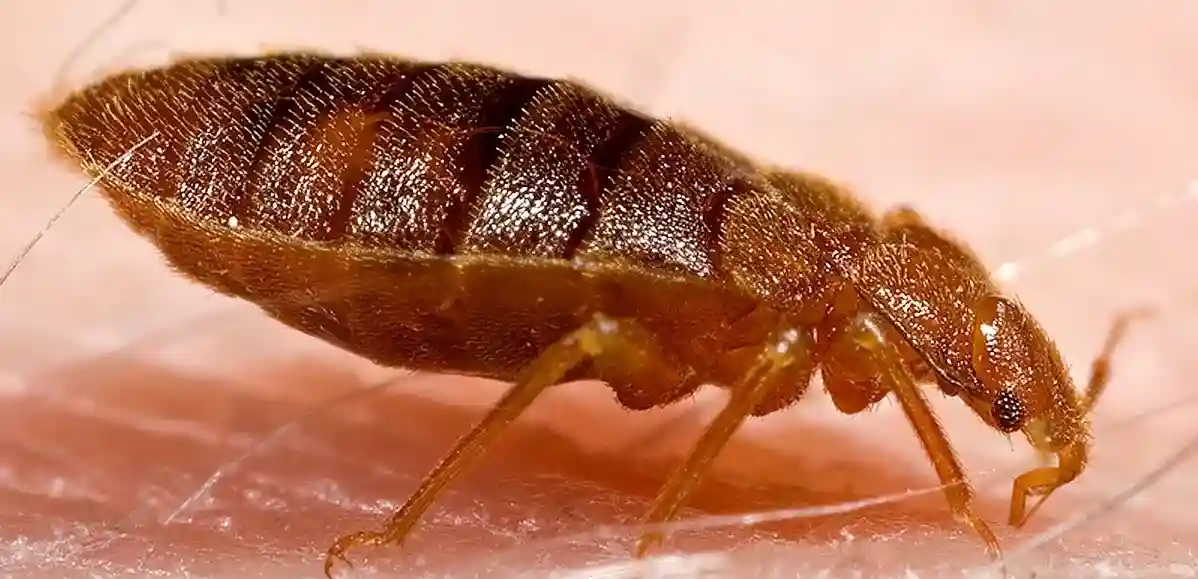How to Handle Carpet Beetle Larvae Near Cat’s Food
How to Handle Carpet Beetle Larvae Near Cat’s Food It might be upsetting to discover little, unwelcome bugs like carpet beetle larvae next to your cat’s food. These insects not only look bad but also might cause health problems. Commonly found in houses, carpet beetles are drawn to natural fibres, pet food, and stored grains, hence your cat’s dining area becomes an interesting place for them. Understanding how to handle carpet beetle larvae near cat’s food is crucial because, Although carpet beetle larvae do not directly endanger cats, their health and comfort depend on their diet free of pests. Including safe cleaning methods, storage practices, and pest management advice, in this we article will provide possible ways to how to Handle Carpet Beetle Larvae Near Cat’s Food. Let’s look at ways you may guard your pet and fight against pests! Why Carpet Beetles are Concern for Pet Owners Little oval-shaped bugs coated in bristle-like bristles are carpet beetle larvae. Often discovered inside furniture, in pantries, or next to pet food, they attract towards organic things such cat food and pet bedding. These indicators point to possible carpet beetle larvae close to your cat’s food: Visible larvae: Little brown, bristly worms called visible larvae appear in and around the eating area for your pet. Shedding: Larvae leave behind tiny, thin brown shells or cast-off skins. Damaged packaging: They could chew through food containers to get cat food. If you see these symptoms, you must quickly resolve the issue. 2. Why Carpet Beetle Larvae Are Attracted to Cat Food Scroungers, carpet beetle larvae search for nutrient-dense organic materials—including dry cat food. Their diet consists of grains, sources of proteins, and sometimes even pet food’s oils. Cat food runs more risk attracting these pests if it is kept in an open container or poorly sealed bag. Regarding storage and pest control, pet food should be handled same as human food. To prevent carpet beetles and other pests, the feeding area must be kept clean, airtight storage must be used, and regular inspections are very crucial. My Experience with Carpet Beetles in My Cat’s Feeding Area I was a bit surprised when I first saw little larvae surrounding the food dish of my cat! Originally unsure of what they were, a short internet search turned up larvae of carpet beetles I had no idea that bugs could easily chew through a standard plastic container, which I had just been placing his food in to keep it convenient. Tossing everything out came first, and I did it, but I wanted to make sure this never happened once again. I started looking for pet-safe medicines, which guided me towards some natural cures. Following thorough cleaning of the whole area, I moved to a metal container with airtight seal for Mittens’ food. Though it required some more work, I also began nightly cleaning the feeding area. Two weeks later, I saw that the carpet beetles had vanished; fortunately, they have not returned. Like this, I handle the beetle larvae, which come near my cat’s food. Looking back, there was a little learning curve, but I’m glad I could manage it organically without using strong chemicals that would impact Mittens. It showed me that keeping bugs out of pet food mostly depends on a little additional attention towards storage and hygiene. Looking for ways to keep your cat healthy? Check out our Best Diet Tips for Cats with Overactive Thyroid to ensure your cat’s diet supports their unique needs. And if your feline friend is a picky eater, don’t miss our guide on How to Deal with a Picky Eater Cat: Tips for Success packed with strategies to make mealtime stress-free! 3. Proven Steps on How to Handle Carpet Beetle Larvae Near Cat’s Food When handling bugs near your cat’s food, give safety a priority. Here’s a methodical way for eradicating carpet beetle larvae from the space devoid of strong pesticides that can endanger your cat: 1: Remove Cat Food Dispose of any infested food: If you discover larvae or castings in your cat’s food, throw it away right away. Clean feeding bowls: Daily washing dishes with warm, soapy water helps to eliminate any possible larvae or eggs that could have found their way onto the surface. 2: Vacuum Thoroughly Vacuum around the feeding area: Carpet beetle larvae thrive in hidden spots. Clean inside appliances, baseboards, even inside cupboards close to the feeding area with a vacuum. Dispose of the vacuum bag: To avoid re-infestation, make sure you dump the canister outdoors right away and discard the hoover bag. 3: Wipe Surfaces Pet-safe cleaning: Dust cupboards and flooring close to your cat’s food using a vinegar and water combo. Natural repellant for carpet beetle larvae and other pests is vinegar. Rinse thoroughly: Make sure no cleaning residue remains as strong smells might deter cats from eating or potentially cause health risks. 4. Preventative Measures: How to Keep Carpet Beetles Away from Your Cat’s Food Area Invest in Airtight Storage Use airtight containers: sealed containers to prevent larvae from getting to it. Avoid leaving open bags out in the feeding area. Rotate food stock: Don’t buy more food than your cat can consume in a reasonable period. This reduces the time for pests to find and infest stored food. Clean Feeding Area Regularly Daily cleaning: Every day cleaning helps to avoid any food particle accumulation that can attract bugs by wiping off the feeding area. Weekly deep cleaning: Move the feeding arrangement and at least once a week clean beneath and around it. Effective insect control depends much on regular cleaning schedules. Inspect New Bags of Food Check for contamination: Occasionally, pests can already be present in new bags of pet food. When you bring home new food, inspect it before pouring it into storage containers. 5. Pet-Safe Pest Control Solutions for Carpet Beetle Infestations If you discover a carpet beetle invasion, think about using natural, safe pest control solutions free of damage to your cat. These are … Read more

